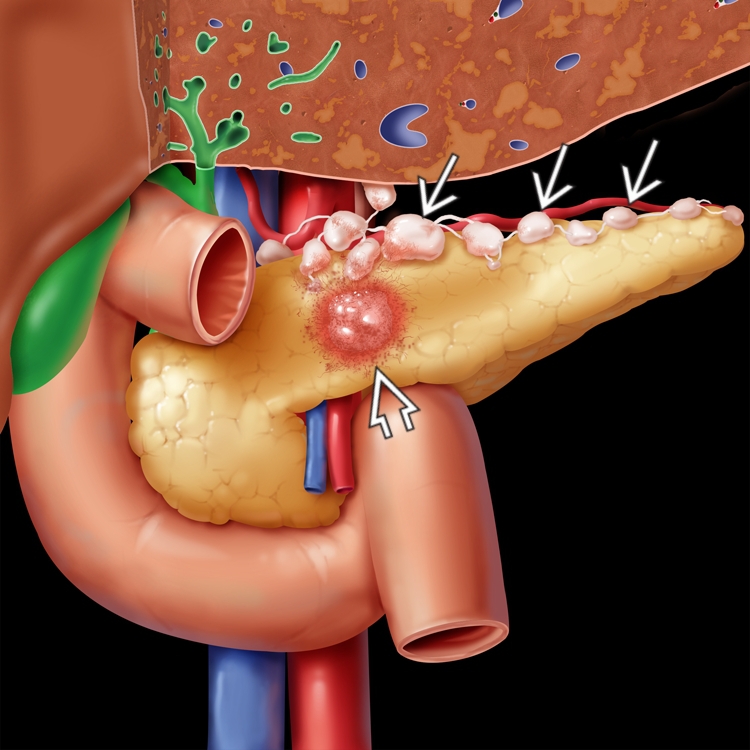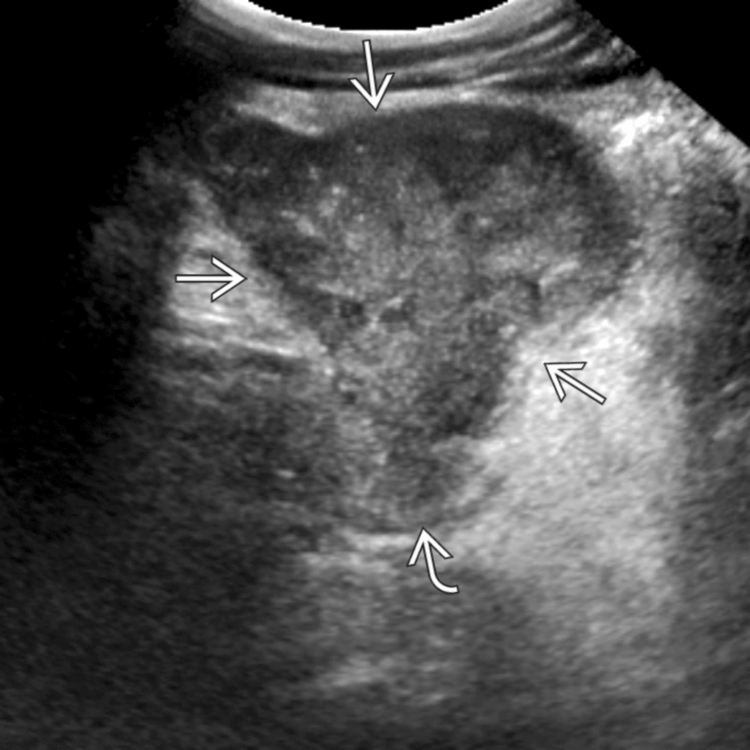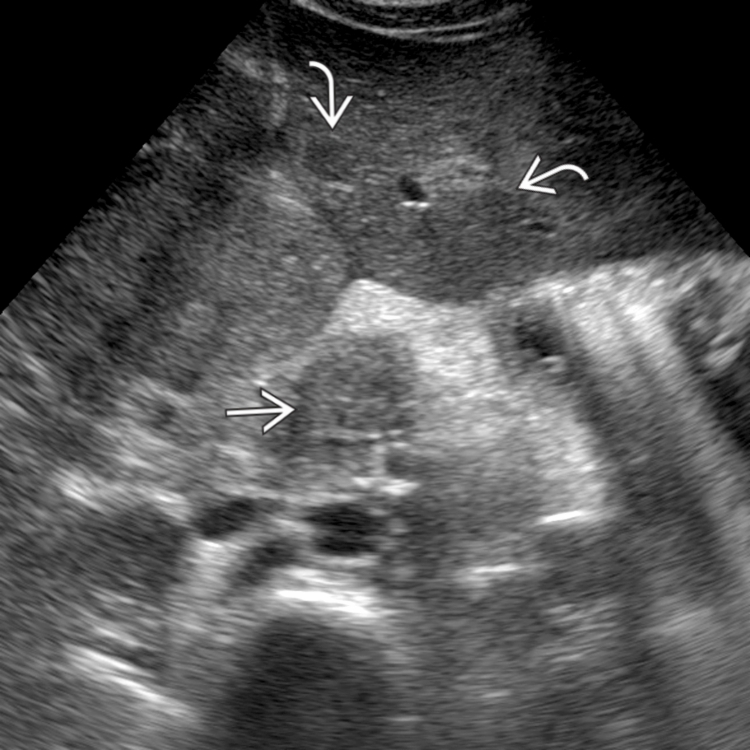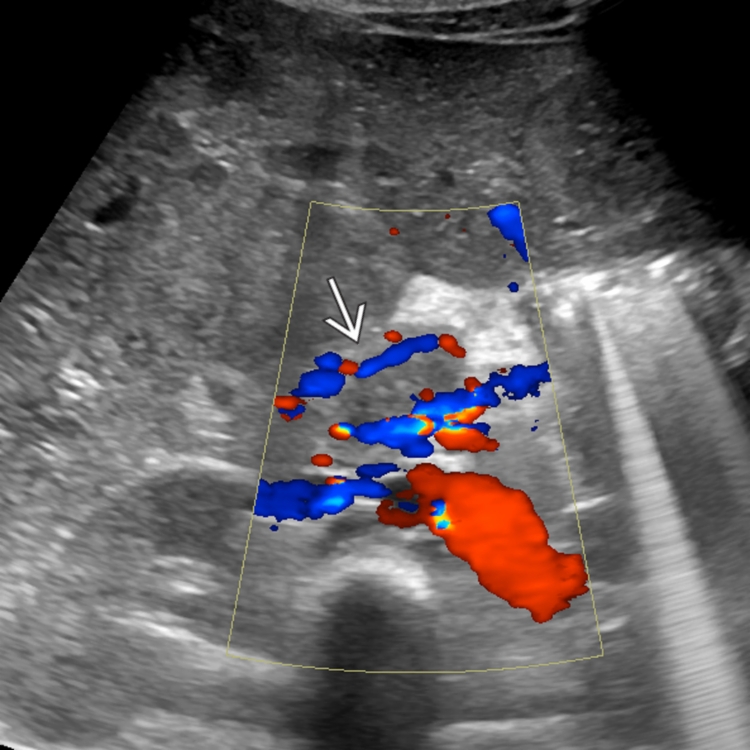KEY FACTS
Terminology
- •
Historically known as islet cell or carcinoid tumors
Imaging
- •
Variable: Range from < 1 cm to > 20 cm; typically 1-5 cm
- •
Small tumors: Well-defined, round, hypoechoic; can be isoechoic with focal contour deformity
- •
Larger tumors are well demarcated, lobulated, and more heterogeneous with cystic change/necrosis and calcification
- ○
Displaces, rather than invades, adjacent structures
- ○
Intratumoral calcification suggests malignancy
- ○
60-90% have adenopathy and liver metastases at clinical presentation
- ○
- •
Absence of pancreatic ductal dilation
- •
Color Doppler: Intratumoral flow
Top Differential Diagnoses
- •
Mucinous cystic pancreatic neoplasm
- •
Solid pseudopapillary neoplasm
- •
Pancreatic ductal carcinoma
- •
Pancreatic metastases or lymphoma
- •
Serous cystadenoma of pancreas
Pathology
- •
All pETs have malignant potential
- •
↑ serum chromogranin A is 70% sensitive for pancreatic endocrine tumors
Clinical Issues
- •
2-3% of all pancreatic neoplasms; peak: 4th-6th decades; younger in familial cases; most occurring sporadically
- •
Familial syndromes: Multiple endocrine neoplasia type I; von Hippel-Lindau, neurofibromatosis type 1, tuberous sclerosis
- •
Functioning tumors: Smaller at time of presentation due to hormonal production of insulin, glucagon, and gastrin
- •
Nonfunctional tumors (60-80%): Usually asymptomatic but larger size at time of diagnosis; may cause mass effect and abdominal pain from primary or metastases
- •
Prognosis: Best for insulinomas (most common functional)
- ○
50-80% noninsulinomas recur or metastasize
- ○
- •
Poor prognostic features: Size > 2-4 cm; cystic change, calcification, necrosis
- •
Surgical resection is only curative treatment for pancreatic endocrine tumors
- •
Insulinoma (Whipple triad): Recurrent symptomatic hyperglycemia
- •
Gastrinoma (Zollinger-Ellison syndrome): Peptic ulcer, esophagitis, and diarrhea
- •
Glucagonoma (4D syndrome): D ermatitis, d iabetes, D VT, and d epression
Diagnostic Checklist
- •
Differentiate from other solid, cystic, hypervascular tumors
- •
Correlate with clinical and biochemical information
 in the pancreatic body with regional metastatic lymphadenopathy
in the pancreatic body with regional metastatic lymphadenopathy  .
.
 arising from the pancreatic tail
arising from the pancreatic tail  . This was a nonfunctioning neuroendocrine tumor, proven by biopsy of liver metastases.
. This was a nonfunctioning neuroendocrine tumor, proven by biopsy of liver metastases.
 in the pancreatic head in a child who presented with abdominal pain and an enlarged liver. Biopsy of a liver metastasis
in the pancreatic head in a child who presented with abdominal pain and an enlarged liver. Biopsy of a liver metastasis  revealed the diagnosis of a nonfunctioning neuroendocrine tumor.
revealed the diagnosis of a nonfunctioning neuroendocrine tumor.
 .
.
 with liver metastases
with liver metastases  .
.
Stay updated, free articles. Join our Telegram channel

Full access? Get Clinical Tree








